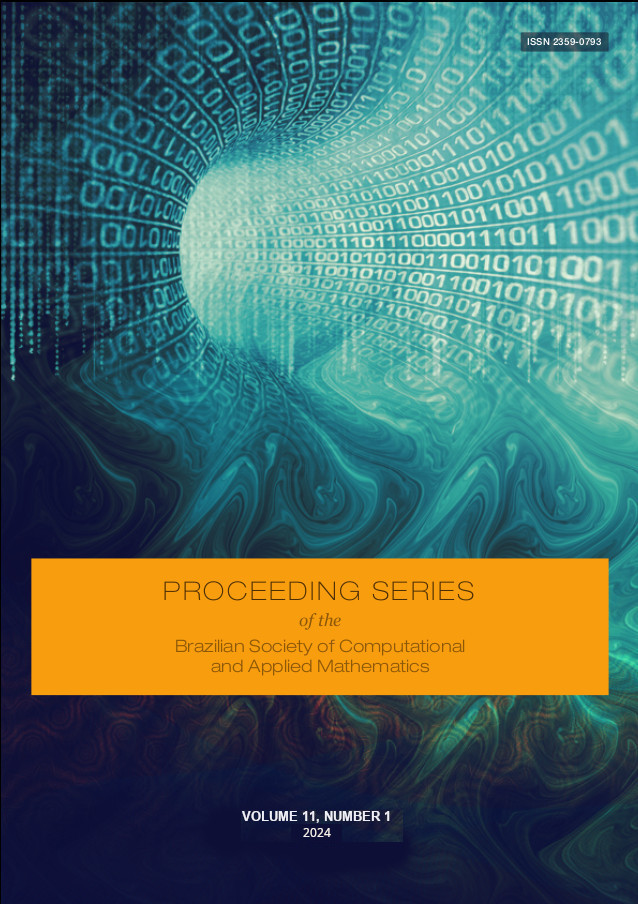Recovering Isometry Groups from Killing Vector Fields
Palavras-chave:
Killing vector fields, Lie groups, Riemannian manifolds, isometry groups, geometry, group theoryResumo
On pure geometric grounds, Killing vector fields play a central role in Riemannian manifolds. They serve as elements of tangent planes, generating local isometries and, in some approaches, could be used to construct global conserved structures on general relativistic spacetimes. Its arms extend to different areas, ranging from classical mechanics to the description of constant-curvature spaces of a homogeneous isotropic and static spacetimes passing through, recently, to their meaning in comprehending fluid flows on curved surfaces. According to several approaches, these vector fields on Lorentzian manifolds can be studied by employing proper actions of Lie groups. However, it’s not explicitly addressed how to recover the Lie group using the expression of Killing vector fields. Our investigation identifies a connection between Killing vector fields and Lie algebra elements by interpreting them as induced vector fields. This connection allows us to reconstruct the Lie groups that preserve the respective metrics, contributing to a deeper understanding of the interplay between geometry and group theory.
Downloads
Referências
M. M. Alexandrino e R. G. Bettiol. Lie Groups and Geometric Aspects of Isometric Actions. Cham: Springer International Publishing, 2015. ISBN: 9783319166124 9783319166131. DOI: 10.1007/978-3-319-16613-1.
R. Atkins. “The Lie Algebra of Local Killing Fields”. Em: arXiv (2008). DOI: 10.48550/ARXIV.0808.3740.
F. Dobarro e B. Ünal. “Characterizing killing vector fields of standard static space-times”. Em: Journal of Geometry and Physics 62.5 (mai. de 2012), pp. 1070–1087. ISSN: 03930440. DOI: 10.1016/j.geomphys.2011.12.010.
J. C. Feng. “Some globally conserved currents from generalized Killing vectors and scalar test fields”. Em: Physical Review D 98.10 (nov. de 2018). ISSN: 2470-0029. DOI: 10.1103/physrevd.98.104035.
B. C. Hall. Lie Groups, Lie Algebras, and Representations: An Elementary Introduction. Vol. 222. Graduate Texts in Mathematics. Cham: Springer International Publishing, 2015. ISBN: 9783319134666 9783319134673. DOI: 10.1007/978-3-319-13467-3.
M. O. Katanaev. “Killing vector fields and a homogeneous isotropic universe”. Em: Physics Uspekhi 59.7 (jul. de 2016), pp. 689–700. DOI: 10.3367/UFNe.2016.05.037808.
S. Kobayashi. Transformation Groups in Differential Geometry. Berlin, Heidelberg: Springer Berlin Heidelberg, 1972. ISBN: 9783540586593 9783642619816. DOI: 10.1007/978-3-642-61981-6.
M. Nakahara. Geometry, topology, and physics. 2a Ed. Bristol: Institute of Physics Publishing, 2003. ISBN: 0 7503 0606 8.
B. F. Rizzuti, G. F. V. Júnior e M. A. Resende. “To square root the Lagrangian or not: an underlying geometrical analysis on classical and relativistic mechanical models”. Em: arXiv (2019). DOI: 10.48550/ARXIV.1905.01177.
T. B. S. F. Rodrigues e B. F. Rizzuti. “From local isometries to global symmetries: Bridging Killing vectors and Lie algebras through induced vector fields”. Em: arXiv (2024). DOI: https://doi.org/10.48550/arXiv.2409.03138.
M. Sánchez. “Lorentzian manifolds admitting a killing vector field”. Em: Nonlinear Analysis: Theory, Methods & Applications 30.1 (1997), pp. 643–654. ISSN: 0362-546X. DOI: https://doi.org/10.1016/S0362-546X(97)00041-2.
Y. Shimizu. “Hydrodynamic Killing vector fields on surfaces”. Em: Journal of Geometry and Physics 196 (fev. de 2024), p. 105080. ISSN: 03930440. DOI: 10.1016/j.geomphys.2023.105080.

